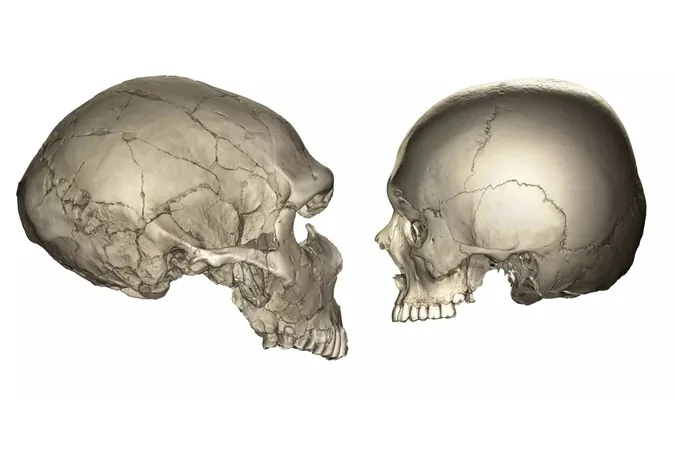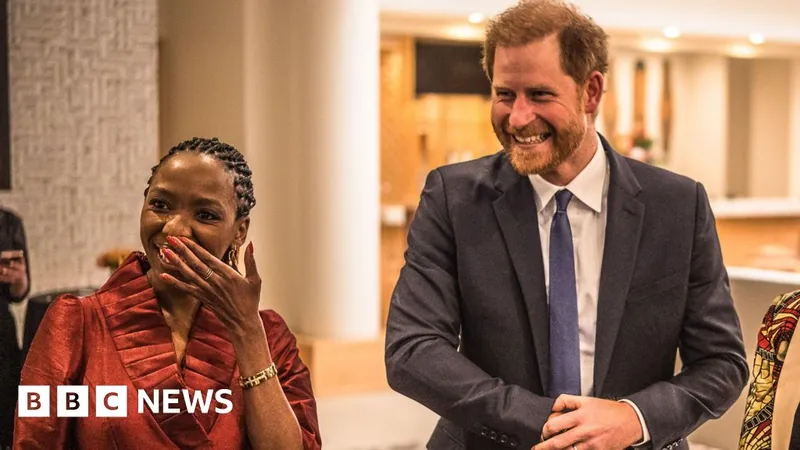
Neanderthal Faces Were Bigger Than Ours – But What Makes Us Truly Unique?
2025-03-27
Author: Jia
Neanderthals and modern humans share a common ancestry that dates back to between 650,000 and 500,000 years ago. However, this evolutionary journey has led to clear distinctions in their anatomical features, especially regarding facial structure. Recent research has uncovered significant differences that might finally explain why modern human faces are smaller and more delicate compared to the robust facial characteristics of Neanderthals.
A groundbreaking study published in the Journal of Human Evolution reveals that the development of facial features occurs at different rates between these two species. Researchers found that modern human faces reach their adult size much earlier in life than those of Neanderthals. The study highlights that Neanderthals had more pronounced bone structures in their cheeks and noses throughout their development, contributing to their larger facial appearance.
Alexandra Schuh, a postdoctoral researcher at the Max Planck Institute for Evolutionary Anthropology, emphasizes that the timing of facial growth is the key differentiator. "Our findings reveal that a change in development, particularly during late growth stages, led to smaller faces," Schuh stated. Unlike Neanderthals and chimpanzees—who continue to grow for a longer period—human facial growth typically concludes around adolescence, resulting in a more refined adult face.
The research team analyzed skulls from 128 modern humans, alongside 13 Neanderthals and 33 chimpanzees, tracking how facial shape and bone cell activities changed over time. It was found that Neanderthals had larger midfaces right from birth, and they continued to experience significant growth well into their developmental years. In contrast, modern humans reach their definitive face size by the time they hit adolescence.
This earlier cessation of growth sets Homo sapiens apart and contributes uniquely to our facial features. The study illustrates a reduction in bone resorption in modern humans, indicating a slower rate of bone turnover as we age, further distinguishing our skeletal structure from that of Neanderthals and chimpanzees.
The evolutionary implications of these findings open a fascinating dialogue about why modern humans developed distinct facial traits. While the "how" may be clearer, the "why" remains a topic of debate among scientists. Some propose that dietary changes might have played a role, while others link these adaptations to improved communication capabilities and social interactions. This theory, known as the human self-domestication hypothesis, posits that less aggressive facial features may have enhanced social cohesion among groups.
Sarah Freidline, a biological anthropologist at the University of Central Florida and co-author of the study, notes that the trend towards facial gracilization could be a reflection of behavioral changes in early human societies, potentially fueled by increased cooperation and reduced aggression.
What is clear is that this research not only elucidates the distinct physical characteristics of modern humans but also suggests deeper connections to our social development, making humans and even our closest relatives, the Neanderthals, uniquely fascinating subjects of study. As more discoveries unfold, the journey of understanding our evolutionary path continues to challenge our perceptions of what it means to be human. So, what other surprising traits might set us apart from our ancient relatives? Stay tuned!


 Brasil (PT)
Brasil (PT)
 Canada (EN)
Canada (EN)
 Chile (ES)
Chile (ES)
 Česko (CS)
Česko (CS)
 대한민국 (KO)
대한민국 (KO)
 España (ES)
España (ES)
 France (FR)
France (FR)
 Hong Kong (EN)
Hong Kong (EN)
 Italia (IT)
Italia (IT)
 日本 (JA)
日本 (JA)
 Magyarország (HU)
Magyarország (HU)
 Norge (NO)
Norge (NO)
 Polska (PL)
Polska (PL)
 Schweiz (DE)
Schweiz (DE)
 Singapore (EN)
Singapore (EN)
 Sverige (SV)
Sverige (SV)
 Suomi (FI)
Suomi (FI)
 Türkiye (TR)
Türkiye (TR)
 الإمارات العربية المتحدة (AR)
الإمارات العربية المتحدة (AR)